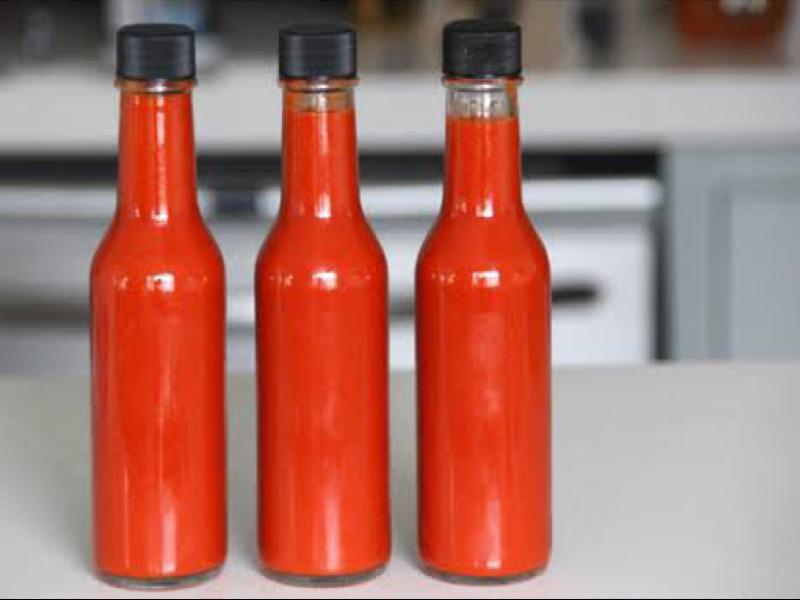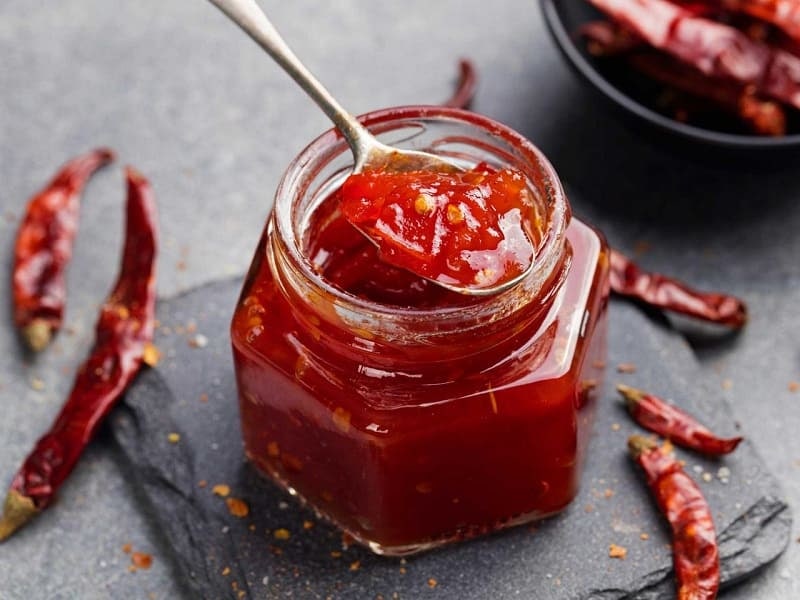A Dive into the World of Hot Sauces: Exploring Types and Flavors
Introduction:
Hot sauce enthusiasts and casual food lovers alike can attest to the addictive thrill of adding a fiery kick to their meals. From mild and tangy to explosive and scorching, hot sauces come in various types and flavors to suit every palate. In this article, we will delve into the world of hot sauce, exploring the different types, ingredients, and popular variations that spice up our plates.
1. Understanding Hot Sauce:
Hot sauce is a condiment typically made from chili peppers, vinegar, and salt. It originated in Central and South America and has since gained worldwide popularity. The heat in hot sauce is primarily derived from capsaicin, the compound found in chili peppers. Scoville Heat Units (SHU) are used to measure the heat level of hot sauces, with higher SHU indicating a spicier sauce.
2. Types of Hot Sauce:
There is a wide array of hot sauce types, each distinguished by its unique flavor profiles, ingredients, and cultural roots. Some popular varieties include:
a) Tabasco Sauce: Hailing from the United States, specifically Louisiana, Tabasco sauce is made using tabasco peppers, vinegar, and salt. It has a tangy and vinegary taste, with a moderate level of spice.
b) Sriracha: Originating in Thailand, Sriracha sauce has gained tremendous popularity globally. Made with red chili peppers, vinegar, garlic, sugar, and salt, Sriracha offers a harmonious balance of sweetness, heat, and tanginess.
c) Louisiana Hot Sauce: This American hot sauce is closer to the original hot sauce flavors from the region. Made with aged chili peppers, vinegar, and salt, it delivers a mild to medium spice level with a tangy edge.
d) Mexican Hot Sauce: Mexico has a vibrant hot sauce culture, with a range of sauces that incorporate local chili peppers like jalapenos, habaneros, and chipotles. Mexican hot sauces often feature additional ingredients like tomatoes, onions, garlic, and spices, creating complex and robust flavors.
e) Asian Chili Sauces: In Asia, chili sauces come in diverse forms such as sambal oelek (Indonesian), gochujang (Korean), and chili oil (Chinese). These sauces offer a blend of spicy, savory, and sometimes sweet flavors, elevating various dishes, from stir-fries to noodles and soups.
3. Spice Levels and Scoville Scale:
The heat level of hot sauces can vary significantly. The Scoville Scale measures the intensity of spiciness, with pure capsaicin scoring at the highest level. Here are some commonly found hot sauces and their approximate Scoville ratings:
– Mild Heat: Usually ranging from 0 to 5,000 SHU, mild hot sauces like Tabasco and Louisiana Hot Sauce provide a hint of heat without overwhelming the taste buds.
– Medium Heat: Falling between 5,000 to 50,000 SHU, sauces like Sriracha and some Mexican hot sauces offer a noticeable but not overpowering spiciness.
– Hot Heat: With a range of 50,000 to 250,000 SHU, hot hot sauces like habanero-based variations can provide a fiery kick that adds depth and intensity to dishes.
– Extra Hot: For those seeking an intense heat experience, sauces in this category can reach upwards of 1,000,000 SHU. Examples include ghost pepper or Carolina Reaper hot sauces.

4. Regional Hot Sauces:
Hot sauces are deeply rooted in regional cuisines, offering a snapshot of local flavors and culinary traditions. Let’s explore a few renowned regional hot sauces:
a) Caribbean Hot Sauce: With influences from African, Indian, and indigenous cuisines, Caribbean hot sauces are vibrant and packed with flavors. Made with Scotch bonnet peppers, herbs, spices, and tropical fruits like mango or papaya, these sauces often have fruity undertones paired with a fiery kick.
b) Peri-Peri Sauce: Hailing from Southern Africa, peri-peri sauce is made from bird’s eye chili peppers, garlic, lemon, and spices. Known for its intense heat and tangy flavor, peri-peri sauce pairs exceptionally well with grilled meats and seafood.
c) Korean Gochujang: This fermented chili paste is an essential element in Korean cuisine. Combining chili peppers, rice, fermented soybeans, and salt, gochujang offers a complex umami flavor profile with a punch of heat. It is frequently used as a marinade or sauce for dishes like bibimbap and bulgogi.
5. Craft and Artisanal Hot Sauces:
In recent years, the hot sauce market has seen a surge in craft and artisanal producers offering unique and small-batch creations. Craft hot sauces are often made with unconventional ingredients such as fruits, exotic spices, and aged peppers. These varieties allow consumers to explore new flavors and support local businesses committed to quality and flavor experimentation.
6. Pairing Hot Sauces with Foods:
Hot sauces can elevate a wide range of dishes, adding complexity and heat to various cuisines. Here are some popular pairings:
a) Mexican Cuisine: Mexican hot sauces like salsa and pico de gallo make excellent companions for tacos, burritos, enchiladas, and other traditional dishes. The smoky and rich flavor of chipotle-based hot sauces complements grilled meats and vegetables.
b) Asian Cuisine: From stir-fries to sushi, Asian hot sauces add a delightful kick and umami flavor to dishes. Sambal oelek, sriracha, and chili oil can be drizzled on noodles, rice, or dumplings for an extra burst of heat.
c) American Cuisine: Classic American dishes like burgers, barbecue, wings, and fries often pair well with tangy hot sauces like Tabasco or buffalo hot sauce.
7. The Growing Popularity of Hot Sauces:
Hot sauces have experienced a surge in popularity worldwide, with enthusiasts seeking not only heat but also unique flavor profiles. The rising interest has led to hot sauce festivals, competitions, and even dedicated hot sauce subscription boxes. People are embracing the diverse range of flavors, ingredients, and heat levels in hot sauces as they discover exciting ways to spice up their meals.
Conclusion:
Hot sauces offer an irresistible combination of heat, flavor, and cultural diversity. From the tangy vinegars of Tabasco to the smoky aromas of chipotle, the world of hot sauces invites exploration. As you venture into this flavorful realm, remember to start with milder options and gradually work your way up the Scoville Scale to discover your personal preference. Whether you are a spice connoisseur or a chili novice, there is a hot sauce out there waiting to ignite your taste buds and take your culinary adventures to new heights.Title: A Dive into the World of Hot Sauces: Exploring Types and Flavors
Introduction:
Hot sauce enthusiasts and casual food lovers alike can attest to the addictive thrill of adding a fiery kick to their meals. From mild and tangy to explosive and scorching, hot sauces come in various types and flavors to suit every palate. In this article, we will delve into the world of hot sauce, exploring the different types, ingredients, and popular variations that spice up our plates.

1. The Hot Sauce Market and Industry Trends:
The hot sauce market has experienced significant growth in recent years, with consumers increasingly seeking unique and flavorful options to elevate their culinary experiences. According to a report by Grand View Research, the global hot sauce market is expected to reach $4.1 billion by 2027, driven by the growing demand for spicy, ethnic, and gourmet foods. This presents an exciting opportunity for entrepreneurs and businesses to tap into this thriving market.
2. Starting a Hot Sauce Business:
If you’re passionate about hot sauce and considering entering the industry, here are some key steps to get started:
a) Research and Development: Begin by conducting market research to identify existing products, understand consumer preferences, and discover potential gaps in the market. Experiment with different ingredients, flavors, and spice levels to create a unique and distinctive hot sauce recipe.
b) Compliance and Safety: Ensure that your hot sauce meets all the necessary food safety regulations and labeling requirements. Consult with local health departments and regulatory authorities to understand the specific regulations applicable to your region.
c) Production and Sourcing Ingredients: Establish reliable sourcing channels for high-quality chili peppers, vinegars, salts, and other necessary ingredients. Consider partnering with local farmers or suppliers to maintain a consistent supply chain.
d) Manufacturing Facilities: Determine whether you will manufacture the sauce in-house or outsource production to a co-packer. Each option has its advantages and challenges, so evaluate your resources, volume requirements, and long-term goals to make an informed decision.
e) Branding and Packaging: Create a compelling brand identity that resonates with your target audience. Design eye-catching and informative packaging that reflects the unique qualities of your hot sauce. Consider eco-friendly packaging options to align with sustainable consumer trends.
f) Distribution and Sales Channels: Decide on the distribution strategy for your hot sauce. Explore options such as online platforms, local specialty stores, restaurants, and farmers’ markets. Additionally, consider partnering with foodservice businesses to reach a broader customer base.
3. Marketing and Promotion:
Effectively marketing your hot sauce can greatly contribute to its success. Consider the following marketing strategies:
a) Social Media and Online Presence: Establish a strong online presence through social media platforms, a dedicated website, and engaging content. Utilize platforms like Instagram, Facebook, and YouTube to showcase recipes, behind-the-scenes footage, and customer testimonials.
b) Influencer Collaborations: Partner with food bloggers, influencers, and chefs who align with your brand and target audience. Collaborating with influencers can help increase product exposure and build credibility.
c) Food Festivals and Events: Participate in food festivals and events to allow potential customers to taste and experience your hot sauce firsthand. These events provide valuable networking opportunities and can generate buzz around your product.
d) Customer Loyalty Programs: Reward loyal customers with exclusive discounts, early access to new flavors, or limited-edition releases. Implementing a loyalty program helps foster customer retention and encourages word-of-mouth referrals.
4. Private Labeling and Co-Packing Services:
If you are not interested in creating your own hot sauce recipe, another option is to consider private labeling or co-packing services. Private labeling allows you to sell hot sauces under your own brand name while outsourcing the manufacturing process to a third-party. Co-packing services provide the manufacturing and packaging expertise, saving you time and resources.

5. Hot Sauce Retail Trends:
The retail landscape for hot sauces has also undergone significant changes in recent years. Here are some emerging trends in hot sauce retail:
a) Artisanal and Small-Batch Products: Consumers are increasingly seeking unique, handcrafted hot sauces made with high-quality, locally-sourced ingredients. Artisanal and small-batch hot sauces cater to this demand, offering consumers a taste of authenticity and supporting local businesses.
b) Organic and Natural Hot Sauces: As consumers become more health-conscious, there is a growing demand for organic and natural hot sauce options. These sauces are made without synthetic additives, preservatives, or GMO ingredients, appealing to health-conscious individuals.
c) Flavor Infusions and Experiments: Hot sauce producers are expanding their offerings by experimenting with different flavor profiles and infusing their sauces with ingredients like fruits, herbs, and spices. This trend caters to adventurous consumers looking for unique taste experiences.
6. Hot Sauce Subscription Boxes:
Hot sauce subscription boxes have gained popularity among enthusiasts and gift-givers alike. These subscription services deliver a curated selection of hot sauces from around the world directly to subscribers’ doorsteps on a regular basis. This convenient and exciting concept allows consumers to explore and discover new hot sauces without the hassle of visiting specialty stores.
7. Health Benefits of Hot Peppers:
Aside from adding a fiery punch to meals, hot peppers offer several health benefits. Capsaicin, the compound responsible for the heat in hot peppers, has been linked to various health advantages, including pain relief, appetite suppression, improved metabolism, and potential cancer-fighting properties. Highlighting these benefits can help position hot sauces as a flavorful, health-conscious choice.
8. Global Hot Sauce Market Expansion:
The hot sauce market is not limited to specific regions or cuisines. With globalization and increasing appreciation for spicy flavors, hot sauces from around the world are finding their way onto international shelves. Korean gochujang, Mexican salsas, and Caribbean pepper sauces are just a few examples of hot sauces gaining global popularity.
9. Hot Sauce as an Ingredient:
Hot sauce is not limited to being a standalone condiment. As consumers seek innovative culinary experiences, hot sauces are being incorporated into various dishes and recipes. From marinades and BBQ sauces to salad dressings and cocktails, hot sauces add depth and complexity to a wide range of culinary creations.
10. Challenges and Opportunities in the Hot Sauce Industry:
While the hot sauce industry presents exciting opportunities for entrepreneurs and businesses, it also comes with its fair share of challenges. These include fierce competition, maintaining consistent quality, and ensuring a sustainable and reliable supply chain. However, with a well-defined brand, quality products, and a solid marketing strategy, there is ample room for growth and success in this thriving industry.
Conclusion:
Hot sauces have become an integral part of global cuisine, enhancing flavors and adding an element of excitement to meals. Whether you are an enthusiast looking to start your own hot sauce business or a consumer eager to explore new flavors, the world of hot sauces offers endless possibilities. By understanding the different types, flavors, and trends in the industry, you can embark on a flavorful journey and discover the perfect hot sauce to spice up your culinary adventures.









